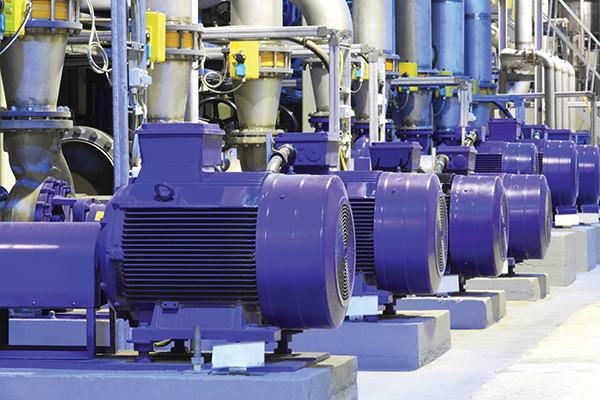Use Accelerometers to Monitor Machines

Accelerometers, in general, are the most common sensor type for measuring industrial vibrations, but you might wonder why there are so many options.
A short and unsatisfying answer is that accelerometers are designed for precise measurements, and that design must account for a lot of variables to ensure the highest level of reliability.
It’s important to look at the measurements you hope to make. What is the amplitude range and frequency of the vibration? How harsh is the environment where the sensor will be mounted? With these key factors in mind, and the following overview of structure and specifications, you can demystify the spec sheet and find the accelerometer that’s right for your application.
Basic sensor design
• Piezoelectric accelerometers are available in flexural, compression, and shear design configurations. Each design structure contains a sensing element (ceramic or quartz), amplifier, base, and housing.
• Shear and compression designs are better suited than flexural designs for industrial machinery monitoring. Flexural designs have lower resonant frequency. Because of their very high output (to 100 V/g), they excel in low-level, low-frequency seismic applications.
• Compression designs are generally good for high amplitude and force measurements because of their high resonance and durability. They should only be used on thick-walled structures because they can be susceptible to base strain and thermal transient sensitivities.
• The shear design is the most common and versatile. The sensing element and seismic mass are secured to a centered, upright base, producing a stiff structure with good frequency response and greater mechanical integrity. Since the sensitive axis is not in-line with the mounting surface, adverse environmental conditions, such as base strain and thermal transients, do not produce false signals.
Critical specifications
• Frequency range and frequency response are two of the most important parameters in accelerometer selection. Use these specifications to compare against the frequency of the vibration you measure.
• Compare the amplitude of your intended vibration or shock against the sensor’s amplitude range. For small vibrations, a higher sensitivity is desirable to provide a cleaner signal (higher signal-to-noise ratio). When trying to measure higher amplitudes for shock events, use a lower sensitivity.
• Consider the sensor’s lowest measurable vibration level. This is specified as either the noise floor or the sensor resolution. The resolution of a piezoelectric sensor is determined by internal amplifier electrical noise and mechanical gain of the mass/piezoelectric system.
• Other critical specifications include temperature coefficient, transverse sensitivity, base strain, and non-linearity.
Environmental considerations
• Many industrial applications require that sensors be protected from elements such as dust and debris, moisture, and intense temperatures. In these cases, the materials used in a sensor become critical.
• In the presence of corrosive chemicals, 316L stainless-steel cases are required over anodized aluminum cases to ensure sensor survivability. Their nonmagnetic properties make them ideal for use around large motors.
• If contaminants are present, hermetically sealed or welded connectors are recommended. Non-hermetic connectors introduce the risk of contaminants reaching the sensing element. EP
For more information about accelerometer selection and mounting techniques, visit the IMI Sensors, a division of PCB Piezotronics, Depew, NY, website at pcb.com.
The post Use Accelerometers to Monitor Machines appeared first on Efficient Plant.
The post "Use Accelerometers to Monitor Machines" appeared first on Efficient Plant

